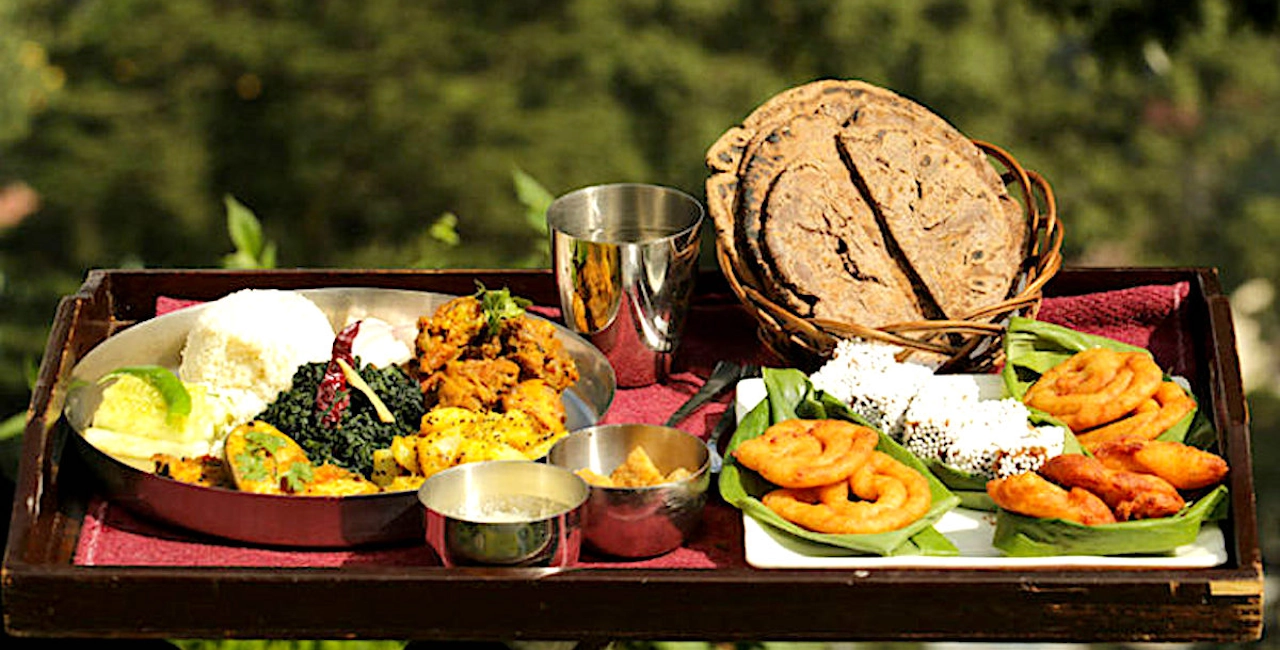Currently Empty: ₹0.00

Mandua Roti, a traditional flatbread made from finger millet flour (Mandua in the local language), holds a special place in the culinary traditions of Uttarakhand. This simple yet nutritious dish is deeply rooted in the culture of the region, where it has been a staple food for generations. Known for its earthy flavor and health benefits, Mandua Roti is more than just a meal; it is a symbol of the rich agricultural practices and sustainable living of the people in the Himalayan foothills.
The Origins and Cultural Significance
Mandua, also known as Ragi in other parts of India, is a hardy grain that thrives in the hilly terrains of Uttarakhand. Its cultivation in this region dates back centuries, making it an integral part of the local diet. The grain’s resilience to adverse weather conditions and its ability to grow in poor soils have made it a reliable food source for the mountainous communities.
In Uttarakhand, Mandua Roti is not just a daily meal but also an essential part of festivals and religious ceremonies. It is often prepared during the winter months when the body requires more energy to stay warm. Traditionally, the roti is served with ghee (clarified butter), seasonal vegetables, or with local dishes like Dubuk or Bhatt ki Churkani, adding to its cultural and nutritional value.
Nutritional Powerhouse
Mandua Roti is celebrated for its impressive nutritional profile. Finger millet is packed with essential nutrients, making the roti a healthy addition to any diet. It is particularly high in calcium, iron, and dietary fiber, which contribute to strong bones, improved digestion, and overall health.
One of the most significant benefits of Mandua Roti is its high calcium content, which is crucial for maintaining bone health. In regions where dairy consumption may be limited, this makes Mandua an excellent alternative source of calcium, especially for growing children and the elderly. The iron content in Mandua is also beneficial for preventing anemia, a common health issue in many parts of India.
Moreover, Mandua Roti is gluten-free, making it an ideal choice for those with gluten intolerance or celiac disease. The high fiber content helps in managing blood sugar levels, making it suitable for diabetics as well. Its low glycemic index ensures that it releases energy slowly, keeping one satiated for longer periods and helping in weight management.
Preparing Mandua Roti
The preparation of Mandua Roti is simple, yet it requires a bit of skill to get the texture just right. The basic ingredients are mandua flour, wheat flour (often mixed to make the dough easier to handle), water, and a pinch of salt.
To prepare the dough, mix mandua flour with a little wheat flour, which helps in binding the dough. Add water gradually while kneading until you achieve a smooth, pliable dough. Divide the dough into small balls, flatten them using your palms, and then roll them out into thin discs.
Cooking Mandua Roti is similar to cooking any other Indian flatbread. Heat a tawa (griddle) and place the rolled-out roti on it. Cook on medium heat until small bubbles start to form, then flip it over and cook the other side. You can cook the roti directly on the flame to puff it up, which adds a nice smoky flavor.
Mandua Roti is best enjoyed hot, smeared with ghee, which not only enhances its flavor but also makes it easier to digest. It pairs beautifully with local curries, dals, or even just a side of pickles and yogurt.
Modern-Day Relevance
In recent years, there has been a growing interest in traditional foods like Mandua Roti, as people become more aware of the health benefits of ancient grains. Mandua’s nutritional profile and its role in sustainable agriculture have made it popular not just in Uttarakhand but also in other parts of India and the world.
Restaurants and health-conscious consumers are rediscovering Mandua Roti as a superfood that is not only delicious but also environmentally friendly. The promotion of millets like Mandua is also aligned with global efforts to support sustainable farming practices and ensure food security in the face of climate change.
Conclusion
Mandua Roti is more than just a traditional dish from Uttarakhand; it is a testament to the wisdom of indigenous agricultural practices and the health benefits of ancient grains. As more people turn towards nutritious and sustainable food choices, Mandua Roti stands out as a perfect example of how traditional foods can play a vital role in modern diets. Its rich flavor, combined with its impressive nutritional benefits, makes it a dish worth savoring and preserving for future generations


